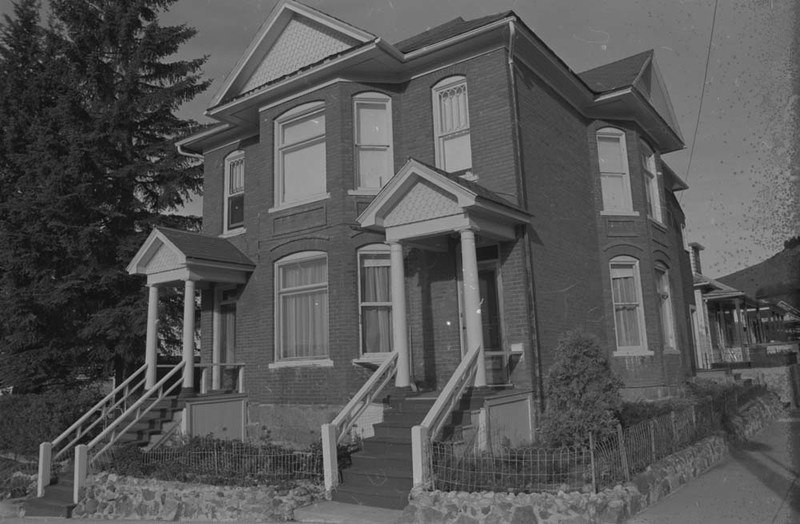
With a two-story, north-side bay window providing extra light and air, this brick duplex takes full advantage of its corner lot. Tuscan columns support the gabled porticos that define the private entrances to a first-floor flat and an interior staircase that leads to the second-story apartment. Private entrances were socially and symbolically important to nineteenth- and early twentieth-century families, who viewed apartment living as somewhat risqué, since neighbors could enter each other’s dwellings without being seen from the street. Real estate manager Philip Dunn and his wife Gertrude rented the first-floor apartment in 1910. Upstairs lived widow Mary Prater and three grown children. Thirty-two-year-old daughter Janie and twenty-eight-year-old son Jack helped support their mother, working as a housekeeper and laborer respectively. Despite conversion to a single-family home, the residence retains a great deal of integrity. Renovations in 2011 uncovered, among other items, a newspaper from 1915, a case of empty pint liquor bottles, milk caps, and the bones of a bird with a note reading "Sparrow killed June 6, 1916."
Images
